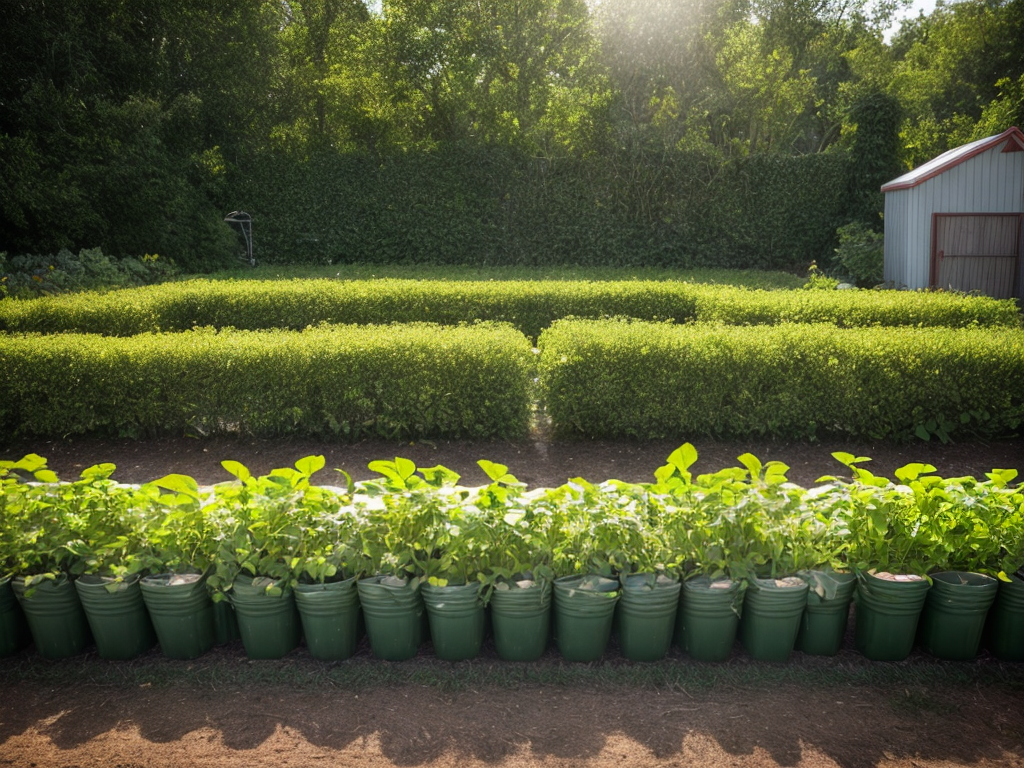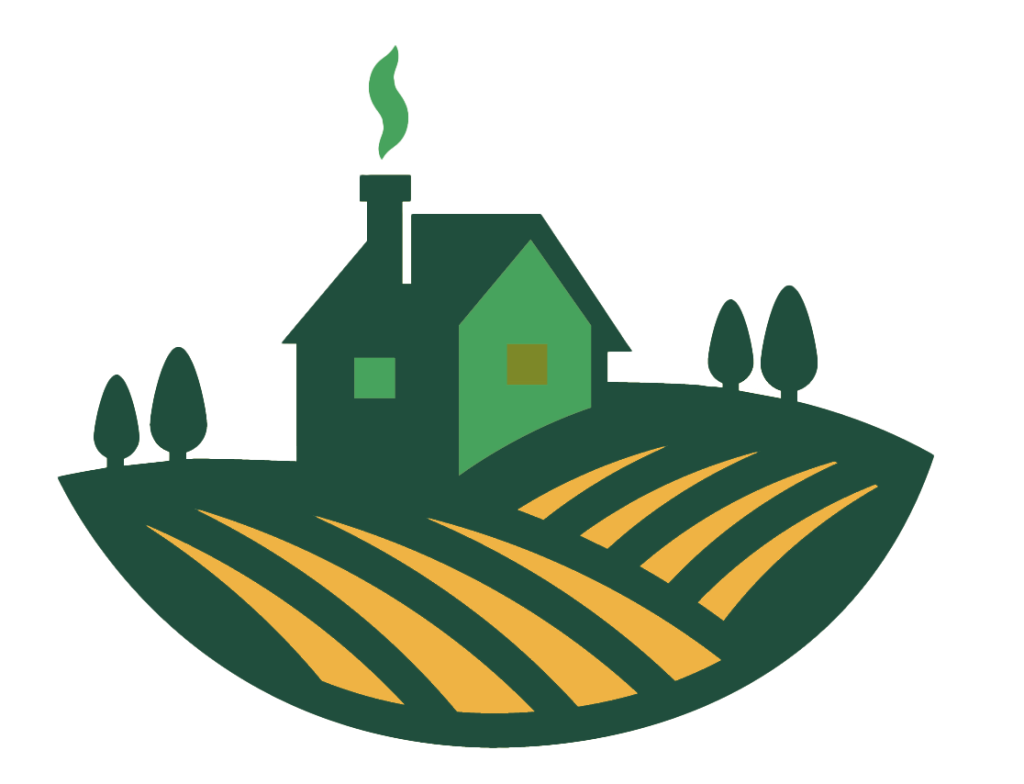
As a passionate gardener, I am always searching for the best ways to nourish my organic vegetable garden. In my quest for the most efficient watering methods, I have discovered eight techniques that have transformed my harvests. From drip irrigation to rainwater harvesting, these methods are not only practical but also environmentally friendly. Join me as we explore the eight best watering methods for organic vegetable gardens, and unlock the secrets to a thriving, sustainable garden.
Drip Irrigation
I prefer using a single drip irrigation system for my organic vegetable garden. It is an efficient method of watering that has numerous benefits. Drip irrigation delivers water directly to the roots of plants, minimizing water waste and evaporation. This targeted approach ensures that plants receive the necessary moisture without overwatering. By providing a slow and steady supply of water, drip irrigation promotes healthy root growth and reduces the risk of diseases caused by excess moisture. Additionally, this system can be easily automated, saving you time and effort. It also helps to conserve water, making it an environmentally friendly choice. With drip irrigation, you can maintain optimal soil moisture levels and ensure the success of your organic vegetable garden with minimal water usage.
Soaker Hoses
Soaker hoses are a fantastic option for conserving water in your organic vegetable garden. They allow for targeted watering, ensuring that the roots of your plants receive the hydration they need without wasting any water. Plus, soaker hoses are an efficient alternative to traditional sprinklers or hand watering, as they deliver water directly to the soil, minimizing evaporation and maximizing plant growth.
Water Conservation Tips
One effective way to conserve water in my organic vegetable garden is by using a specialized irrigation tool. Soaker hoses are a great option for water conservation. They provide a slow and steady drip of water directly to the roots of the plants, minimizing water waste through evaporation or runoff. By using a soaker hose, I can maintain a consistent watering schedule for my vegetable garden, ensuring that the plants receive the right amount of water without overdoing it. Another water conservation tip is to consider using graywater, which is the relatively clean wastewater from household activities like dishwashing or laundry. By collecting and reusing graywater in my garden, I can reduce my overall water consumption and promote sustainable gardening practices.
Plant Root Hydration
Efficiency is key when it comes to ensuring optimal plant root hydration in my organic vegetable garden. One of the best methods I have found is using soaker hoses. These hoses are designed to release water slowly and directly to the plant roots, promoting healthy plant root development. Here are two reasons why I believe soaker hoses are a great choice for watering my garden:
- Consistent Moisture: Soaker hoses provide a steady supply of moisture to the plant roots, preventing under or over-watering. This consistency is crucial for plant root development and overall plant health.
- Watering Frequency: Soaker hoses allow me to water less frequently while still ensuring the plants receive enough water. This not only saves time and effort but also helps conserve water in the long run.
Efficient Drip Irrigation
I have found that with efficient drip irrigation, using soaker hoses in my organic vegetable garden is a reliable method for promoting optimal plant root hydration. Soaker hoses are designed to release water slowly and directly into the soil, ensuring that the roots receive a consistent supply of moisture. This method not only helps to prevent water waste but also allows for better water usage optimization, as it targets the roots directly instead of spraying water over the entire garden. To further illustrate the benefits of efficient drip irrigation, here is a table comparing the water usage of different irrigation methods:
| Irrigation Method | Water Usage Efficiency |
|---|---|
| Soaker Hoses | High |
| Sprinklers | Medium |
| Hand Watering | Low |
| Drip Irrigation | Very High |
As you can see, soaker hoses rank high in water usage efficiency, making them a practical choice for organic vegetable gardens.
Rainwater Harvesting
To maximize sustainability and minimize water waste, I rely on rainwater harvesting as a vital method for watering my organic vegetable garden. Rainwater purification is an essential step in ensuring that the water collected is clean and safe for my plants. I use a combination of filtration systems and natural methods to purify the rainwater, such as using mesh screens to remove debris and installing a charcoal filter to eliminate any impurities. Rain barrel installation is another important aspect of rainwater harvesting. I have strategically placed rain barrels around my garden to capture as much rainwater as possible. This not only reduces my reliance on tap water but also helps in conserving this precious resource. By incorporating rainwater harvesting into my gardening routine, I am able to nourish my vegetables while being environmentally conscious.
Hand Watering
Hand watering is a practical method that allows me to directly nourish my organic vegetable garden while conserving water. There are several benefits of hand watering that make it an effective technique for maintaining a healthy garden. Firstly, hand watering allows me to have complete control over the amount of water each plant receives. This is especially important for delicate seedlings or plants with specific water requirements. Additionally, hand watering enables me to spot any issues or pests that may be affecting my plants, as I am up close and personal with them during the watering process. To ensure proper hand watering, it is important to use a watering can or hose with a gentle spray nozzle. This helps to avoid overwatering and reduces the risk of soil erosion. I like to water my plants in the early morning or late afternoon to minimize evaporation and ensure the water reaches the roots. Overall, hand watering is an efficient and effective method for nourishing my organic vegetable garden.
Mulching
Moving on to mulching, an important technique that complements hand watering in maintaining a healthy organic vegetable garden is applying a layer of mulch to the soil surface. Mulching offers numerous benefits, such as:
- Conserving moisture: Mulch helps retain soil moisture by reducing evaporation, preventing water loss, and ensuring plants have a steady water supply.
- Suppressing weeds: By covering the soil, mulch acts as a barrier that prevents weed growth, minimizing competition for nutrients and water.
When it comes to choosing mulching materials, there are several options available:
- Organic mulch: Materials like straw, hay, leaves, and grass clippings break down over time, enriching the soil with nutrients.
- Inorganic mulch: Plastic, landscape fabric, or rubber mulch can effectively suppress weeds and conserve moisture, but they do not add organic matter to the soil.
Self-Watering Containers
I’ve always found self-watering containers to be a game changer in my vegetable garden. Not only do they save me time and effort, but they also ensure that my plants receive a consistent water supply. When choosing a self-watering container, it’s important to consider the size. Smaller containers may require more frequent refilling, while larger ones can accommodate a larger volume of water, reducing the need for constant monitoring.
Benefits of Self-Watering
With self-watering containers, I can effortlessly ensure consistent moisture levels for my organic vegetable garden. These containers are equipped with self-watering systems that provide automatic irrigation, saving me time and effort. Here are some benefits of using self-watering containers:
- Water Efficiency: Self-watering containers are designed to deliver water directly to the roots of the plants, preventing water wastage and ensuring efficient water usage.
- Consistent Moisture: The self-watering system provides a constant supply of water to the plants, maintaining consistent moisture levels in the soil. This helps prevent under or overwatering, which can lead to plant stress or diseases.
- Reduced Maintenance: With self-watering containers, I no longer have to worry about watering my plants daily. The containers have a reservoir that holds water, reducing the frequency of watering and making maintenance easier.
- Ideal for Busy Gardeners: If you have a busy schedule or are going on vacation, self-watering containers are a great solution. They can keep your plants hydrated for longer periods, ensuring their survival even when you’re not available.
Container Size Considerations
When choosing self-watering containers for my organic vegetable garden, container size is an important consideration. The size of the container will directly impact the spacing of plants and the frequency of watering. For container spacing, it is crucial to choose a size that allows enough room for the plants to grow and develop healthy root systems. Crowding plants in a small container can lead to competition for nutrients and stunted growth. On the other hand, a container that is too large for the plants can result in excessive moisture retention and potential root rot. In terms of watering frequency, larger containers will generally require less frequent watering compared to smaller containers. This is because larger containers can hold more water, providing a reservoir for the plants to draw from. When selecting self-watering containers, it is essential to strike a balance between container size, plant spacing, and watering needs to ensure optimal growth and harvest.
Wicking Beds
One effective method for watering organic vegetable gardens is utilizing wicking beds. Wicking beds are self-watering systems that provide a continuous supply of moisture to plants, reducing the need for frequent watering. They are easy to set up and require minimal maintenance. Here are some key points to consider when it comes to wicking beds:
-
Wicking bed maintenance:
-
Regularly check the water level in the reservoir to ensure it doesn’t run dry.
-
Clean the wicking bed periodically to prevent clogs and buildup.
-
Wicking bed materials:
-
Use a high-quality geotextile fabric to separate the soil from the water reservoir.
-
Select a suitable container, such as a raised garden bed or a large planter, that can hold the necessary amount of water.
Hydroponics
Continuing the discussion on watering methods for organic vegetable gardens, I found that incorporating hydroponics is an innovative way to provide plants with the necessary moisture while minimizing water usage. Hydroponics is a soil-less method of gardening that allows plants to grow in nutrient-rich water. One advantage of hydroponics is that it uses up to 90% less water compared to traditional soil-based gardening. The water in a hydroponic system is recirculated, reducing the amount of water wasted. Additionally, hydroponics allows for better control over nutrient levels, resulting in healthier and more productive plants. However, there are some disadvantages to consider. Setting up a hydroponic system can be expensive, and it requires careful monitoring of pH levels and nutrient concentrations. It also requires a constant power supply for the water pumps and lighting. Nevertheless, if you are willing to invest the time and resources, hydroponics can be a highly efficient and rewarding method for growing organic vegetables.


